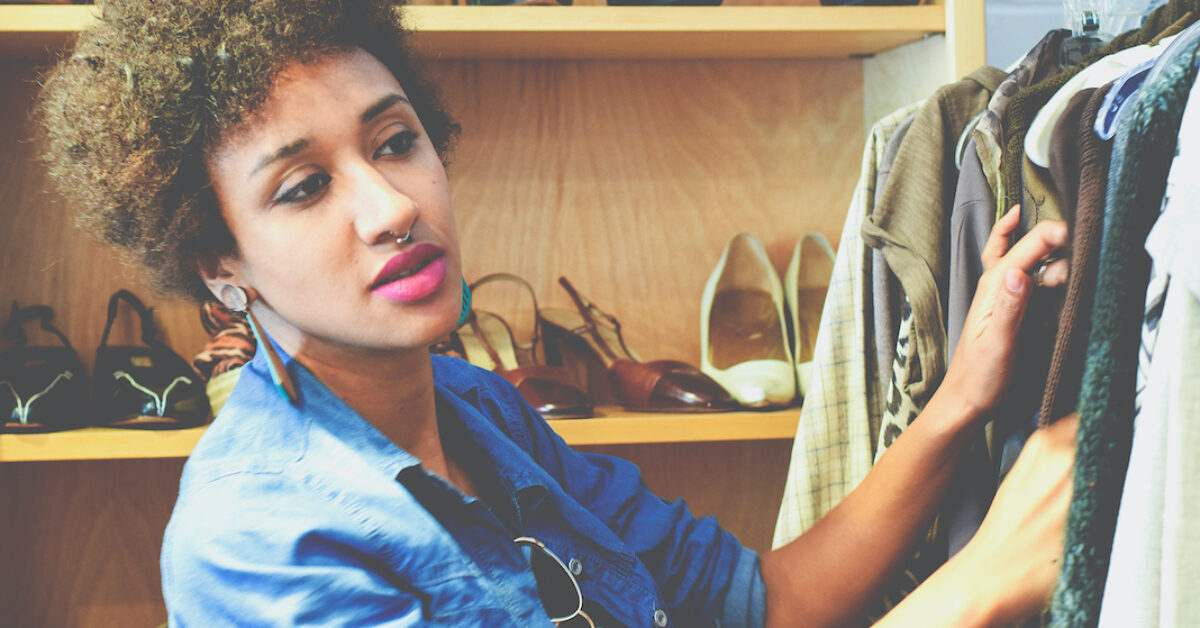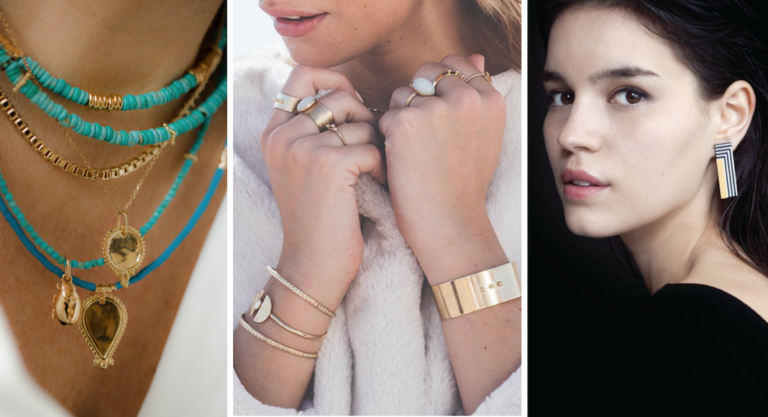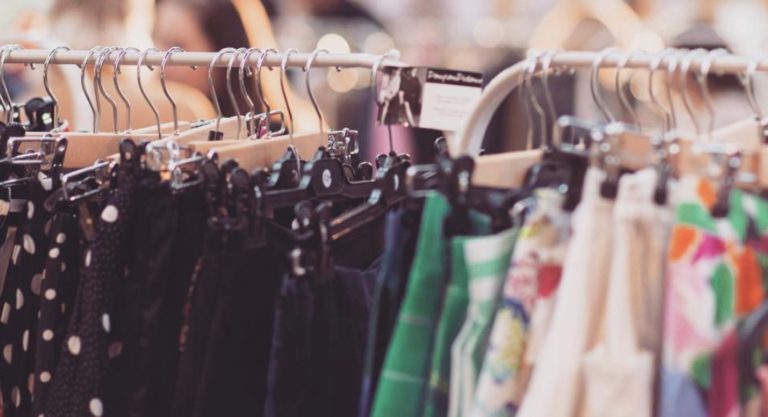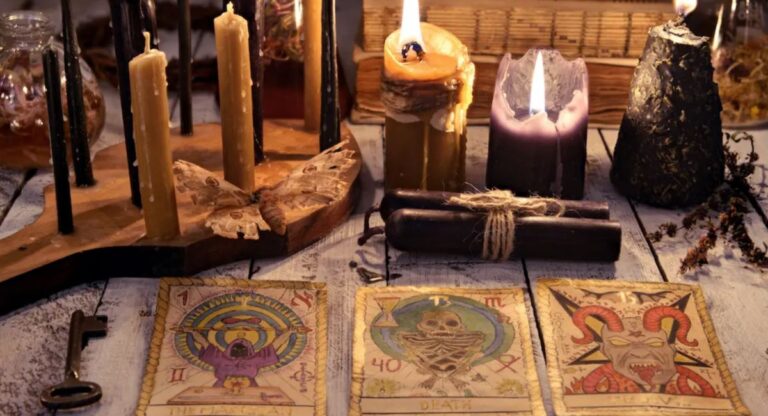New Year’s resolutions are so passé — instead, why not focus on Earth Day resolutions? While it’s crucial to be climate conscious year round, Earth Day is an opportunity to reflect on the sustainable swaps you could make to help keep our planet healthy (or at least, to keep it from imploding in our lifetime). One easy swap is to shop vintage or second hand as often as possible — it’s less costly for your wallet and for the planet. Not to mention, it’s more fun; there’s a flush of delight that comes from finding a dreamy, just-for-you piece — one that no one else will be wearing. Plus, it helps keep clothes in closets and out of landfills.
Instagram will load in the frontend.
To celebrate Earth Day, we chatted with Paris’ resident vintage guru, Emma Moatti, who runs Sous Les Pavés, Le Vintage (Under the Pavement, the Vintage) — a name which is a literal nod to her four underground stories brimming with her whimsical, wonderful vintage collection in Paris’ Saint-Germain-des-Prés neighborhood. Hers is one of many vintage shops around Paris that are frequented by French women who have a long history and passion for picking up a perfect pair of vintage jeans or bag, rather than buying new. ( Frenchly recently rounded up a tour of great vintage shops in Paris.)
The store itself focuses largely on Italian designers, with a particular panache for Pucci and Missoni. Moatti waxes poetic about Pucci, describing his work as pieces that “really have a soul,” and noting that the designer — who started off as an Olympic skier — invented the ski jumpsuit. Her collection spans the decades — except the ‘80s, which she declares “is not feminine,” adding that “no woman looks good in it, and it’s a bit ridiculous, so I don’t buy it at all.” Instead, she prefers to focus on things like vintage lingerie from the ‘20s and ‘30s, a proclivity she inherited from her mother.
Instagram will load in the frontend.
“My mom is passionate about vintage lingerie, so I’ve been around it since I was little,” she explains, adding that she’s learned how to repair the lace herself. “You absolutely must continue to use it – whether you need to transform it completely or repair it, we can’t continue to reproduce things when we have ones that aren’t ruined.”
Speaking about the sustainability of vintage, Moatti says, “Much vintage is in great shape and doesn’t even need repair. But when you buy fast fashion, you often throw it away just because we don’t value it. If you go buy a top from H&M and there’s a hole in it, you throw it away. You’ll never repair it because there’s no value in it for you. But with vintage, you repair it.” She continues, “Because it’s something that’s already existed – I’ll fix it up, and it’ll continue to live. So it changes our relationship with the object and the way that we own them — we have more affection for the pieces because we’re not the first. There’s a history.”
That history means that even if certain garments were made of materials we now deem unsustainable, such as petroleum-based synthetics, they are at least already made. “It doesn’t require production, or dyeing the material,” says Moatti. “Yes, the ‘60s and ‘70s used synthetics, but it’s the highest quality and it lasts longer, whereas today’s fast fashion is made with plastic. So yes, some vintage is synthetic, but it already exists — so that’s a clear reason why shopping vintage is beneficial for the environment,” she explains.
Instagram will load in the frontend.
Speaking about other reasons why buying vintage is more sustainable, she adds, “There’s a unique aspect; you have to find your size, something that looks good on you and is in your budget. It prevents you from doing something crazy, like impulse buying. [With mass-produced clothes], you can try a thousand different styles or sizes, but it’s not the same with vintage – it’s one piece, and if you find one that works, it’s something you’ll keep forever. And if it’s not good, you just don’t buy it.”
Instagram will load in the frontend.
When it comes to what she does buy, Moatti says, “It’s a lot of work. To form your eye – I made a lot of mistakes at first. I bought a lot of stuff I shouldn’t have because it was cute, but it wasn’t necessarily well cut. I didn’t have the eye, at the start,” she says, adding that she now knows that you have to have “a lot of heart and a good eye.” She adds, “But you learn as you go. Even in vintage, you’re obliged to adapt to the trends,” she says, explaining, “to whatever the popular cuts are. Every cut will have its hour of glory.”
Sophie Dodd is a staff writer for Frenchly who covers all things Paris, travel, wine and lifestyle. She also writes for Travel + Leisure and PEOPLE. You can follow her adventures in Brooklyn, Paris and beyond on Instagram.






